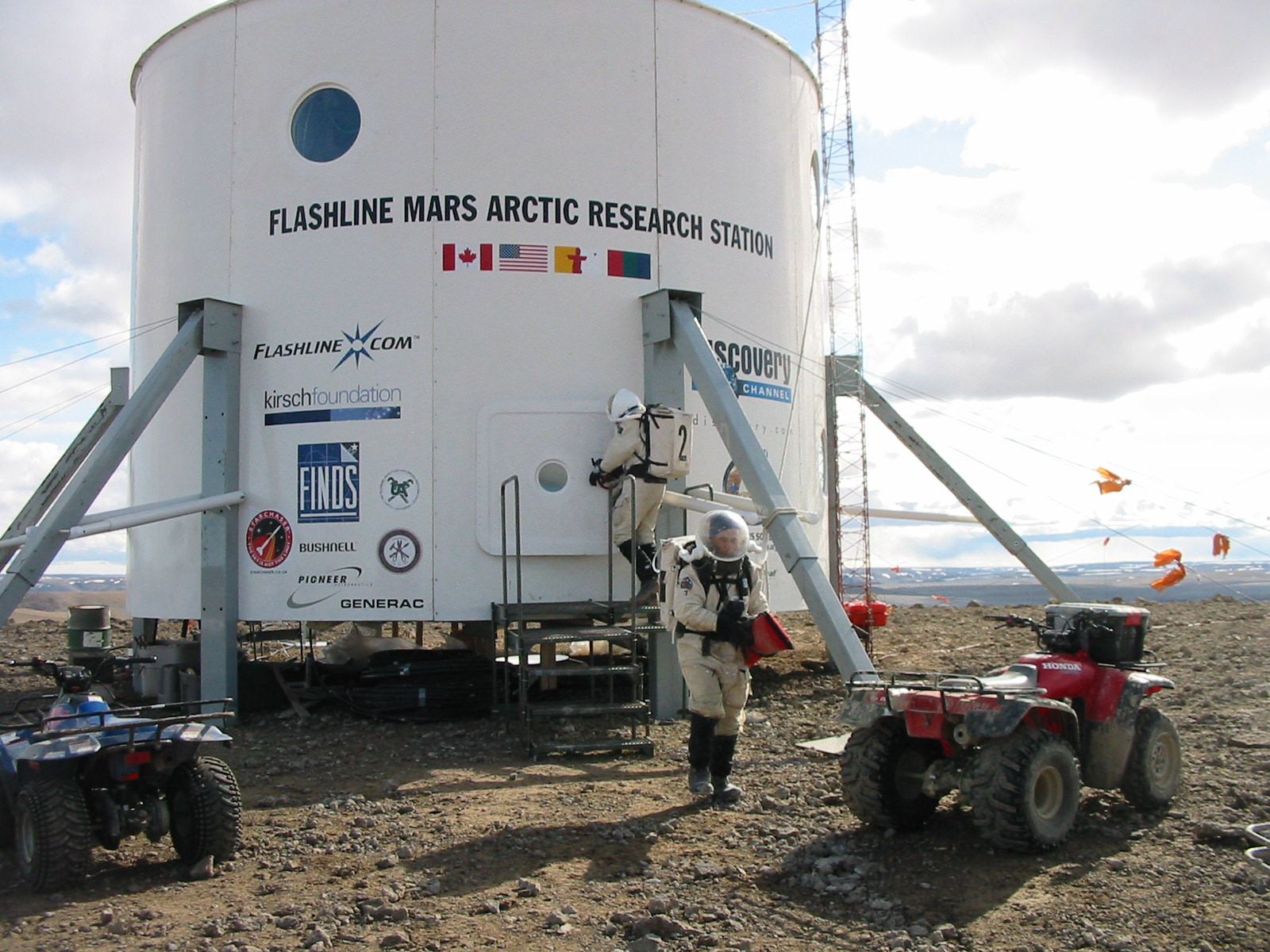The Arctic’s a lot like Mars, according to the Mars Society. It’s cold, it’s isolated, and it’s kind of dangerous. And, the society says, it’s ready to bring humans to the Arctic for a year to make a mission there even more Mars-realistic.
The proposed Mars Arctic 365 (MA365) mission on Canada’s Devon Island would take place at Flashline Mars Arctic Research Station, where missions have been sent since 2001 for periods of a few months each. This mission would encompass all seasons, though, including the bitter winter.
In a press release, Mars Society president Robert Zubrin drew comparisons of his latest venture with the Mars500 mission that saw a group of people put into a simulated Mars spacecraft in Moscow. But, he added, the Mars Society will go “much further” as the work will include field exploration similar to what Mars astronauts would do: geology, climate and microbiology. Also, the Arctic — like Mars — is a “cold and dangerous remote environment.”

“It is only under these conditions,” Zubrin added, “where the crew is trying hard to get real scientific work done, while dealing with bulky equipment, cold, danger, discomfort, as well as isolation, that the real stresses of a human Mars mission can be encountered, and the methods for dealing with them mastered.”
The mission isn’t finalized yet, but fundraising is under way.
The society is asking for $50,000 from supporters in the next 24 days before starting the first phase (basically retrofitting the station and adding equipment) in July. Phase 2, the mission itself, would happen in 2014. Total costs for both phases are estimated at $1.13 million.
More information on MA365 — perhaps with information on crew selection — should come in August, when members of the Phase 1 crew issue a report at the 16th Annual International Mars Society Convention.
Source: The Mars Society, with a hat-tip to aerospace analyst Jeff Foust. Foust live-tweeted a talk today by Zubrin — who included mention of the effort — at the International Space Development Conference in Washington, D.C.


You could simulate it better by sending the “explorers” to the ISS (or a manufacuted spacecraft), to orbit the duration of the trip to Mars then having them land on Earth near the installation (or even somewhere safer and then be transported there) to simulate the work by themselves after their trip to Mars.
I mean watching Chris Hefield recoup after being on the ISS, acclimating to even Mars gravity will be an unpleasant thing after the trip.
A ship that rotates in space relatively rapidly, could easily simulate gravity. If they want a stable outside view for the astronauts, all they need to do is counter-rotate the cameras or simulate counter-rotation . . . . it’s not rocket science . . . well, maybe it is.
Yes, but you see how much actual study they have done with humans in giant-wheel space habitats already… none. If they are going to use it in the first spacecraft to Mars, they need to test it.
I don’t think those Hondas are going to run very well on mars, given no oxygen for burning fuel.
I agree why would they use hydrocarbon fuel for power on earth, right? That makes no sense right.. 🙂 The quads are hybrid nuclear-electric just like curiosity because thats easily available and cheep. I just bought a hybrid nuclear-electric from Wallmart it came with 90 day return policy; that is why NASA bought Curiosity from Wallmart for use on mars because it had the warranty.
These people again? About ten years ago I had no doubts about their sincerity and passion to get to Mars, and as soon as possible.. Now, not so sure.
Yeah, sometimes it seems more like an excuse to play Mars explorer.